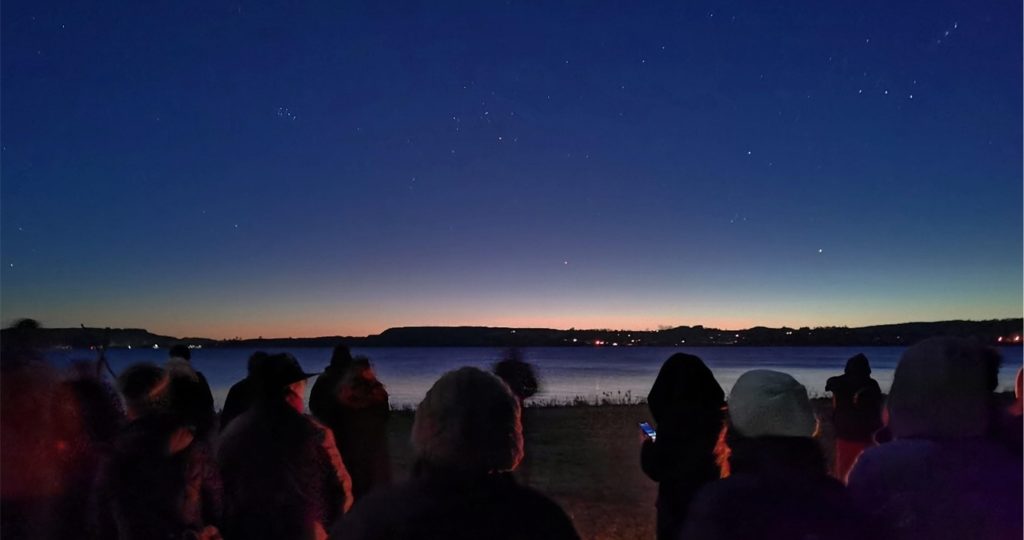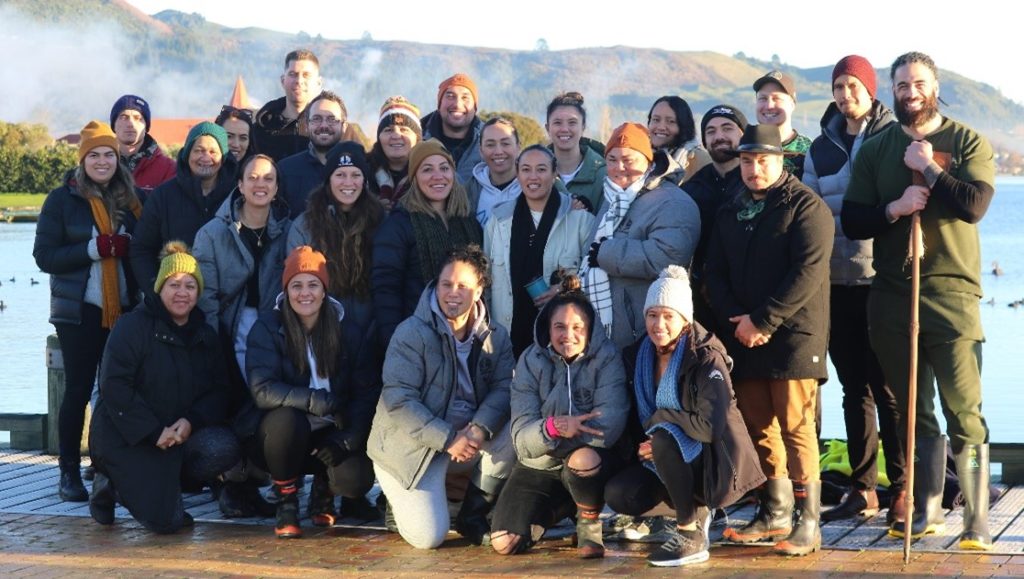07 Jul Te Umu Kohukohu Whetū reflections
“Ko te rua o Puanga tēnā. Hēoti ake ngā kupu poroporoaki; Waiho mā te tōmairangi e whakamākūkū.”
“The double of Puanga. Let now those words of farewell suffice, where they may be enriched by the dew of the heavens.”

Frost covered the ground at the lake’s edge, where the cool air had found a place to settle amongst the early morning bodies. It was 3:30am, July 2nd or perhaps, more aptly the first day of the Tangaroa moon phase heading into Hōngongoi. If you are well-versed in Māori astronomy you will know that this marks te mātahi o te tau, the end of the harvest and the opening into a new year. I wasn’t very well informed about how this morning was going to go, and so each stage was a pleasant and unexpected surprise.
We boarded the boat headed for Mokoia Island around 4am, all 150 or so of us, arriving on the island at around 5am. Together, with torches lighting the clearings ahead, we walked for 10 minutes to the island’s edge. From there the night sky unfolded above us, a perfectly clear night for reading ngā tohu o te rangi. The maunga rose gently in the background like a pillow, and the waters of Te Rotorua nui a Kahumatamomoe like a reflective blanket lay before us, starry eyed and sleeping. Three fires burned warm and bright, whipping through the cold air. The umu lay beneath the earth cooking the offerings of food that would soon be brought out.

As the first rays of sunlight began to peak over the mountains the kai was lifted from the earth – arā tētahi tuna, kūmara, koura, me te manu. These four foods were placed onto an ahurewa as offerings to the star cluster Matariki, in particular Tupu-a-nuku – the star relating to food of the land; Tupu-a-rangi – the star relating to food of the sky; Waitī – the star relating to food of fresh water; Waitā – the star relating to food of the sea. The smoke wafted into the air, rising above to feed the stars. Provocations of karakia were spoken from te kāhui tohunga, names were recited of those who had passed across the year, tears were shed, and karanga rang out across the heavens.
Given this was my first time truly acknowledging te mātahi o te tau, and witnessing a hautapu I was overcome with feelings of gratitude, not only for getting to be a part of the experience, but for the way that I was being called back into the current of Māori time. An opportunity to think deeply about our relationship with taiao and tohu, and how we can align ourselves with the cycles that are moving around us all the time. If there is one thing that I took away from our mahi on the project ‘He Kai Kei Aku Ringa’ it was that our relationships with food as Māori are part of a bigger web of relationships that include Atua Māori and the realms that they occupy. This was a perfect re-affirmation of that learning, and an opportunity to head into my new role leading our Toi Tangata kai Māori strategy in alignment with the bigger forces and cycles of our deities.

This year it was awesome to see and hear about the many hautapu which took place across Aotearoa welcoming in the rising of locally prominent stars. I thought about my own whānau and whenua, and the tikanga that we have up home around the early rising of Puanga in Te Tai Tokerau as a symbol of the new year. Fires were lit both literally and metaphorically as a calling of remembrance for those loved ones we had lost, and the reclaiming of tikanga kua roa e noho matao nei ki te whenua ōtira te tāngata, that had long sat cold on the land and amongst the people. However, this time, smoke ascended throughout the whenua like the presence of a multitude of ahikā upon the land once again; hei tohu o te ora.



